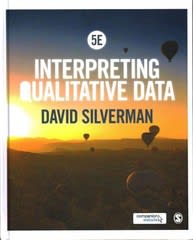Answered step by step
Verified Expert Solution
Question
1 Approved Answer
Set B: Electrochemical Communication Science can be an adversarial process, where competing ideas and theories are tested and challenged in order to advance knowledge. One
Set B: Electrochemical Communication Science can be an adversarial process, where competing ideas and theories are tested and challenged in order to advance knowledge. One famous example is the debate between Santiago Ramn y Cajal and Camillo Golgi in the late 19th century about the structure of the nervous system, with Cajal's theory ultimately being supported by new techniques in staining and microscopy. Similarly, the debate between Luigi Galvani and Alessandro Volta in the late 18th century over the nature of animal electricity led to the discovery of electrical current and the invention of the battery. In both cases, scientific progress was made through the adversarial process of challenging established beliefs and testing new ideas. B1. Explain Cajal's neuron doctrine while contrasting it with Golgi's reticular theory. How do their respective theories and discoveries illustrate the interdisciplinary nature of neuroscience and biopsychology? B2. Like Golgi and Ramn y Cajal, Sir Charles Sherrington was also awarded the Nobel Prize in Physiology and Medicine (1932) for his discoveries regarding the function of neurons. Imagine an experiment in which a dog's leg is pinched and its reflexive motor reaction is recorded. You measure the speed of the nerve signal as it completes a reflex arc at 15 meters per second (m/s); however, based on the speed of action potentials alone, one would expect the arc to be completed at approximately 40 m/s. Why is the conduction speed of the dog's reflex arc slower in this case than what one would expect? B3. Why did Volta's theory of chemical electricity prevail over Galvani's theory of animal electricity? Explain by referring to both ionic flow through neurons and to synaptic transmission between neurons. B4. An action potential is an all-or-none event of constant magnitude (i.e., always follows the same curve relative to timing and voltage). How can we then tell the difference between a weak and a strong stimulus, for example, a weak vs. a strong slap on the wrist? B5. What would happen if the sodium channels on the neuronal membrane never closed following the peak of an action potential? Explain in detail by referring to the passive and active mechanisms responsible for maintaining the resting potential. Please number answers
Step by Step Solution
There are 3 Steps involved in it
Step: 1

Get Instant Access to Expert-Tailored Solutions
See step-by-step solutions with expert insights and AI powered tools for academic success
Step: 2

Step: 3

Ace Your Homework with AI
Get the answers you need in no time with our AI-driven, step-by-step assistance
Get Started


